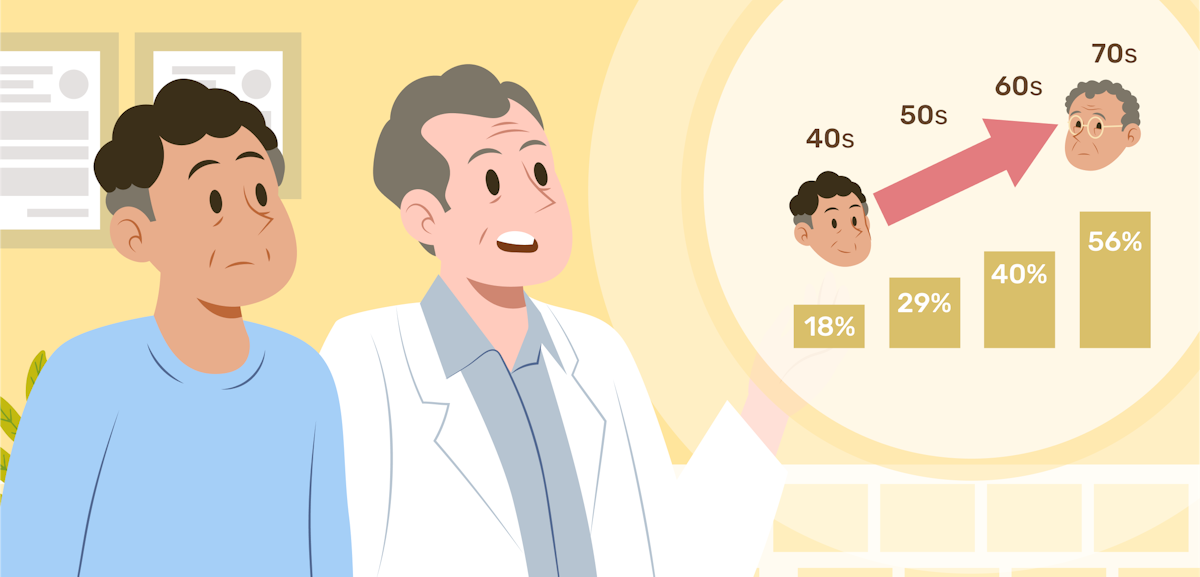
By Dony P. Santiago, MD FPUA

By Dony P. Santiago, MD FPUA
Learn about Benign Prostatic Hyperplasia, its causes, symptoms, and treatments, to protect aging men’s urinary health.

The prostate is a gland in the male reproductive system below the urinary
bladder and surrounds the urethra. It produces a fluid that is important in sperm health and viability. It provides essential nutrients for sperm and helps neutralize the acidity of the vagina.

Benign Prostatic Hyperplasia is defined as the enlargement of the prostate gland without cancer. Commonly found starting at the age of 40. When the prostate gland enlarges, it causes obstruction in the flow of urine from the urinary bladder to the urethra.
It is the main cause of Lower Urinary Tract Symptoms (LUTS) in men, which includes frequency (voiding more frequent than usual), urgency (uncontrollable urge to urinate), nocturia (waking up at night to urinate), weak stream (low pressure of urination), intermittency (interruption of voiding), sensation of incomplete voiding and straining. Is it one of the most common conditions in men that requires medical attention and can cause significant problems if left untreated.


are the main causes for the development of Benign
Prostatic Hyperplasia.

Genetics and family history also play a role

like nasal decongestants can worsen the symptoms of
Benign Prostatic Hyperplasia.

According to studies, in Asia, Benign Prostatic Hyperplasia is present in 18%, 29%, 40%, and 56% of men in their 40s, 50s, 60s, and 70s. This is similar to other regions of the world. As the data suggests, as a man ages, the incidence also proportionately increases.

It is best to see a doctor, preferably a Urologist. A urinalysis, ultrasound, Digital Rectal Examination (DRE), and Prostate Specific Antigen (PSA) will help in the diagnosis and guide the treatment. It is very important to determine that the cause is in fact, Benign Prostatic Hyperplasia and not prostate cancer, because their symptoms have similarities. Even without Lower Urinary Tract Symptoms, 6. 7. men 45 years old and above should consult for screening of prostate cancer, and as early as 40 years old if with a family history of prostate cancer.

The natural history of Benign Prostatic Hyperplasia varies. Some patients may remain asymptomatic to little symptoms over time. But if left untreated.
are some of the possible complications of uncontrolled Benign Prostatic Hyperplasia.

Treatment depends on the severity of Benign Prostatic Hyperplasia symptoms. It is classified into mild, moderate, and severe. Lifestyle modifications like fluid management, decreasing intake of caffeine, and alcohol will help. The doctor may prescribe a medication for Benign Prostatic Hyperplasia in the form of alpha blockers and 5 alpha reductase inhibitors, and some may need surgery if necessary.
In my experience, most patients will get better with medications and lifestyle modifications. Good medicines are widely available. But adherence to treatment is a major problem; many patients stop taking the medicine once significant improvement is appreciated. The best result is achieved when the patients seek consultation in the early stage of the disease, not when complications have already set in. In such conditions, surgical treatment in the form of Transurethral Resection of the prostate (TURP) or laser prostatectomy is advised.
8